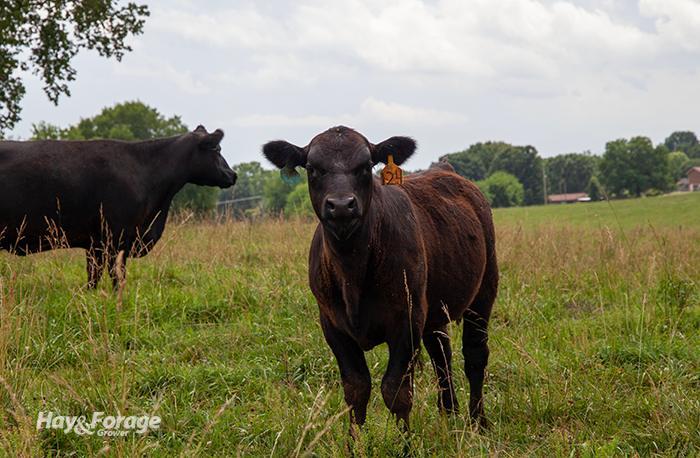
Winter can be a critical growth period for weaned calves that are retained as backgrounders. This stretch of time sets the stage for final animal performance, which may be helped or hindered by the grazing, feeding, and supplementation practices calves are subject to.
In an article from University of Nebraska Extension, Karla Wilke suggests a few forage options for spring-born calves that were weaned in the fall and will be backgrounded through the winter. The cow-calf systems specialist notes these options ultimately depend on a farmer’s feed resources, labor limitations, and marketing strategy.
Cornstalk residue and native range. The former feedstuff is a mainstay for many beef graziers in the Great Plains, and it can be a valuable forage resource for weaned calves as well. Similar to pregnant and lactating cows, it will likely be necessary to provide calves on cornstalk residue with supplemental protein and minerals in order to achieve targeted gains.
“Supplementation strategies should always be evaluated based on the price of the supplement — including transportation and labor — against the value of the gain derived from the supplementation on a yearly basis,” Wilke asserts.
She refers to research from eastern Nebraska where 500-pound calves lost body weight when they received only mineral supplementation on cornstalk residue. Grazing calves that ate 3.5 pounds of a corn, molasses, and urea mixture per day gained 0.5 pounds per day. On the other hand, calves grazing cornstalk residue supplemented with 3 pounds of dried distillers grains per day gained 1.3 pounds per day.
“This suggests the calves needed supplemental rumen undegradable protein as well as energy while grazing cornstalk residue,” Wilke explains. Another Nebraska study showed 600-pound calves gained about 1 pound per day while grazing native range when supplemented with 2 pounds of dried distillers grains per day.
Annual forages and cover crops. Wilke encourages farmers to graze weaned calves on winter annuals like oats, triticale, or cereal rye that were seeded after corn silage harvest. She notes one study from Nebraska shows calves gained between 1.5 to 2 pounds per day by grazing oats or a mix of oats and forage radishes from November to January.
Wheat pasture grazing is another winter forage resource, especially in the Southern Plains. Once again, supplementing calves in these systems with dry rolled corn or dried distillers grains will help animals meet average daily gain goals.
Total mixed rations. Feeding a total mixed ration comprised of corn silage, haylage, and dried distillers grains may be the best option for farmers with limited pasture acres. Wilke suggests going this route may also be cheaper than buying hay for weaned calves. She adds that nutrient density and intake are more easily controlled when feeding calves a total mixed ration, which may lead to more uniform body weights at market.
Regardless of the feeding and marketing strategy, Wilke recommends aiming for 1 to 1.5 pounds of gain per day for weaned calves to develop adequate structural and muscular growth through the winter. Although some farmers may rely on compensatory gain when backgrounders enter a feedlot, that likely won’t offset the weight gain calves could have achieved under more proactive grazing, feeding, and supplementation plans.
“Even though cattle restricted during backgrounding experience compensatory gain once they are placed on a higher plane of nutrition, they typically only compensate about 37% to 38%, meaning they continue to have lighter body weight than cattle backgrounded to gain 1.5 pounds per day,” Wilke writes.

